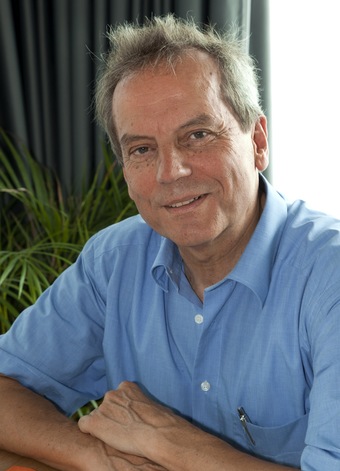Obituary: Prof. Dr. Harald Friedrich
2017-03-07 – News from the Physics Department
Harald Friedrich was born on 19 May 1947 in Berlin-Schöneberg but grew up in Australia where he attended school from 1953 to 1964. After his matriculation examination in Melbourne he moved back to Germany to study physics at the universities of Kiel and Freiburg where he received a degree in physics. Friedrich earned his PhD in theoretical physics in 1974 at the University of Münster with a study on a reformulation of the microscopic description of the scattering properties of light and medium-light atomic nuclei. Next steps in his career were a postdoctoral position at the University of Oxford and another stay in Münster where he received his habilitation in 1980.
Friedrich used a Heisenberg scholarship to venture into a new research area: Modern theoretical atomic physics. From 1981 to 1983 he worked at Caltech before he continued his scientific career at TUM and the Max-Planck-Institut für Quantenoptik. He then took on a position in Tübingen before in 1987 he became a professor in physics at TUM. This was the place where he stayed, lectured and carried out research with his students until his retirement in 2012, interrupted only through sabbatical leaves as a guest professor in the United States and Australia.
In the 1980s Harald Friedrich gained international reputation in the field of quantum chaos when he published work together with his doctoral student Dieter Wintgen on the chaotic behavior of the highly excited quantum states of hydrogen atoms in strong magnetic fields.
Friedrich’s work is reflected in the many papers on atomic physics and in his books on “Scattering Theory”, “Theoretische Atomphysik” and on “Theoretical Atomic Physics” which will appear 2017 in its fourth edition. On its more than 600 pages many topics in atomic physics are beautifully laid out. The book includes many results obtained by Friedrich and his co-workers, especially in the fields of semiclassical properties of atoms, atomic scattering, threshold effects, Feshbach resonances, slow motion of atoms and cold atoms.
Harald Friedrich was a highly respected teacher and group leader. The students liked him because of his scientific competence and his friendly character. His favorite problem-solving tool was a piece of paper and a pen which he always carried along in his shirt pocket. We will miss Harald.
Manfred Kleber
Textbooks
- Theoretical atomic physicsHarald Friedrich
- Scattering theoryHarald Friedrich
- Theoretische AtomphysikHarald Friedrich
Important publications
- The hydrogen atom in a uniform magnetic field — an example of chaosFriedrich H, Wintgen D
- Working with WKB waves far from the semiclassical limitFriedrich H, Trost J
- Quantum reflection by Casimir-van der Waals potential tailsFriedrich H, Jacoby G, Meister CG
- Local potential models for the scattering of complex nucleiBuck B, Friedrich H, Wheatley C
